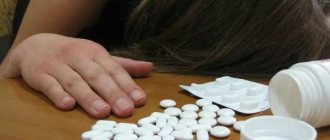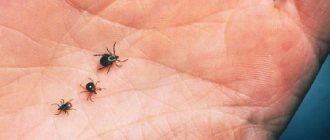What is dopamine? It is called differently: the hormone of joy, happiness, pleasure, and they also say that it is it that controls our passions. A person’s behavior, mood and even character largely depend on this hormone. It is responsible for attention and motivation, and activates the desire to study. Which of all this is true and which is exaggeration, whether it is necessary to replenish dopamine reserves in the body and how to do it correctly - we will talk about all this in the article.
What is dopamine and how does it work?
Dopamine belongs to the group of neurotransmitters. That is, it is a substance involved in the transmission of nerve impulses.
This process occurs in the cells of the nervous tissue - neurons due to their structure. Neurons consist of a body from which 2 types of processes extend:
- an axon is a long process that transmits an impulse to another cell;
- A dendrite is a short process that receives an impulse from another cell.
At the junction of the axon of one cell and the dendrite of another, a space is formed - a synapse. Each neuron has synaptic vesicles, where transmitters are located. A nerve impulse activates the release of a neurotransmitter from the axon vesicles into the synapse. And then they are “absorbed” from there by the dendrites of another cell.
But not the entire amount of the mediator is involved in the transmission of impulse. Some of it passes to the presynaptic region through reuptake. In this way, neurotransmitters are released and absorbed throughout the nerve chain and transmission of the nerve impulse, and therefore information, occurs.
Dopamine, along with serotonin, histamine, glutamine, and GABA, is precisely such a mediator. It synthesizes adrenaline and norepinephrine, which also transmit nerve impulses.
Dopamine is produced directly in the brain. Therefore, when it is artificially introduced into the blood, it acts only as a hormone, and it does not penetrate into the subcortical brain structures.
The main place of its brain concentration is the midbrain, namely: the substantia nigra and the ventral tegmentum. From here it is transmitted to the striatum - a section of the telencephalon involved in the regulation of muscle tone, motor activity, the emergence of conditioned reflexes and the functioning of internal organs.
Dopamine also spreads to the limbic system, which influences the emergence of emotions and automatisms, regulates the cycle of sleep and wakefulness, and controls the sense of smell and the activity of our organs.
How we get pleasure
The main role of dopamine is to participate in the regulation of the “reward system”. This is the structure that provides the feeling of positive emotions. In other words, the dopamine transmitter provokes feelings of pleasure and satisfaction. The operation of the reward system is closely related to the punishment system. Their union ensures the formation of persistent behavior.
Objects and actions of the external world that evoke positive feelings in us receive from us in return, with the help of dopamine, a primary psychological reward, that is, a good attitude towards them. Such basic objects include food, the process of reproduction and confrontation.
Secondary reward provides objects and states with their value and primary necessity for us. For example, the value of food and money is irrefutable for us.
Dopamine and serotonin are the two main stimulants that control the reward system.
This function of the neurotransmitter was first identified by two American scientists in 1954. They conducted studies on rats by installing electrodes in a separate part of their brain. They pressed a lever installed in the animal's cage, exposing the area with electrodes to small discharges of current, and activated it. Then the animals learned to press the lever themselves, and subsequently did this on their own initiative for almost 1 thousand years. once an hour, forgetting about food and sleep. Scientists concluded that the stimulated area was the center of pleasure. It is she who is under dopamine control.
In this way, it was established that dopamine is a biologically active substance that causes a feeling of pleasure.
Thanks to a special device - a radionuclide topographic marker, in studies on mice, chimpanzees and humans, it was found that the dopamine transmitter is released and causes positive emotions not only at the moment of action. It turned out that even the very thought of something pleasant for us stimulates this process. Thus, dopamine is involved in the formation of evaluation and motivational attitudes.
In studies of male mice, dopamine levels began to increase when they saw a female. In chimpanzees it increased when they saw food.
In a person, the content of dopamine increases even when he remembers a subjectively pleasant, that is, significant event for him, or when he dreams about something. Moreover, it is enough for a person to remember not a specific event, but only the place where it happened. For example, a guy proposed marriage to a girl on a bridge. This became a joyful and pleasant event for her. And now, fleetingly running through it and not thinking about this event each time, her dopamine level still rises.
If an action or state ceases to be pleasant and meaningful for us, or causes us negative emotions, the amount of the mediator decreases below normal.
Thus, dopamine stimulates the pleasure center. Its level rises above normal when we experience positive emotions. And it decreases when we are accompanied by unpleasant feelings.
Indications for use
Dopamine is prescribed:
- for various types of shock (traumatic, cardiogenic, infectious-toxic, anaphylactic, after surgery );
- after poisoning, if it is necessary to force diuresis ;
- in case of hypovolemic shock , after the volume of circulating blood is restored;
- for relief of acute cardiovascular failure ;
- with a decrease in blood pressure .
Other features
Dopamine is not only involved in the formation of feelings of pleasure. Its role in the emergence of another feeling, such as love, especially maternal love, has been proven. It also evokes affection for a partner and develops the concept of fidelity between spouses.
The mediator takes part in the development of cognitive functions. In particular, its increase is necessary for quickly transferring attention from one activity to another. Otherwise, when its quantity decreases, a person develops inertia, as well as perseveration - a state in which multiple automatic repetitions of a phrase, action, or expression of emotion occur.
The neurotransmitter gives us the ability to analyze our actions, mistakes, review our behavior, and draw conclusions. People with its deficiency lack critical thinking and ignore their negative experiences.
Have you noticed this: you go online to ask a specific question, and after 40 minutes you realize that you are reading about something completely different. It's all dopamine. It makes us want to look for answers to questions, ways to solve them, to explore the world and exist in it. It also gives us a sense of pride in our achievements.
Dopamine gives us a thirst for searching for information. We only stop searching when we know the answer to a question.
The researchers conducted an experiment. They set up a table with 6 jars of jam in a supermarket and invited passers-by to taste it. At the same time, 60% of the total number of visitors tried the jam. 17 people chose and purchased a treat for themselves.
Then the number of cans became 24. The percentage of tasters dropped to 40, buyers - to 2. Conclusion: the choice has increased - it has become more difficult to find the answer, that is, to decide on the choice. In both experiments, tasters tried a maximum of 4 varieties of product.
By activating the extrapyramidal system, dopamine increases motor activity and eliminates inhibition. By relieving muscle spasm, it frees you from stiffness of movement. Its antagonists in this work are acetylcholine and GABA.
Dopamine theory of schizophrenia
To understand the place of the dopamine theory of schizophrenia and self-stimulation in the development of the disease, you need to understand a little about the essence of the disease itself.
Schizophrenia is a polysymptomatic mental disorder, accompanied by destruction of thinking and the emotional sphere.
In the clinical picture of the disease, there are 2 groups of symptoms:
- positive – psychoproductive;
- negative – psychodeficient.
Productive symptoms include delusions, hallucinations and disturbances in mental activity:
- delirium of influence of extraneous forces from the environment, greatness;
- the statement that the thoughts that arise in a person are stolen from or placed in the head by someone;
- the feeling that his thoughts are heard by everyone;
- the patient hears voices that comment on his activities and thoughts, and conduct conversations with each other;
- meaningless speech, behavior, thinking: inventing new words, breaking thoughts.
Negative symptoms include:
- alogia – poverty of speech;
- anhedonia – inability to experience pleasure;
- apathy;
- abulia – lack of will;
- reduced emotionality.
There are several types of schizophrenia depending on the predominance of certain symptoms:
- A simple form is the predominance of negative symptoms, such as emotional poverty, decreased willpower, and detachment from people. It develops gradually, delusions and hallucinations are absent.
- Paranoid form - characterized by delusions and hallucinations.
- Catatonic form – associated with impaired motor activity. Catatonic stupor gives way to catatonic excitement. In a stupor, a person freezes in a certain position, cannot move, does not speak and is unable to control his body. But consciousness is preserved. And when leaving this state, the patient accurately retells what happened around him and what he heard. Agitation manifests itself in impulsive behavior. The man runs, screams, shows aggression.
- Hebephrenic form - begins in adolescence. Manifests itself in emotional and volitional disorders. Characterized by inappropriate behavior, foolishness, causeless gaiety, inability to worry about someone, and lack of emotional attachment.
Proponents of the dopamine hypothesis argue that schizophrenia develops when the level of dopamine in the brain changes and is maintained for a long time. In a healthy person, it is almost always within the same value. Its surges or declines occur regularly, but they are short-lived.
But when such changes become more persistent, the disease develops. If the amount of dopamine transmitter becomes higher than normal, this causes productive symptoms: delusions, hallucinations, the patient becomes excited, he has overvalued ideas. When dopamine levels drop, a person experiences negative signs of the disease: apathy, decreased emotions and volition.
Contraindications
The medicine is not prescribed for:
- pheochromocytoma;
- allergies to its components;
- hypertrophic obstructive cardiomyopathy;
- ventricular fibrillation.
Particular care should be taken:
- with myocardial infarction and heart rhythm disturbances;
- patients with diabetes mellitus or atherosclerosis ;
- hypovolemia;
- with thromboangiitis obliterans ;
- patients with metabolic acidosis ;
- for angle-closure glaucoma ;
- persons suffering from hypertension ;
- with hypercapnia ;
- atherosclerosis;
- during breastfeeding ;
- with thyrotoxicosis ;
- thromboembolism;
- patients with prostatic hyperplasia ;
- pregnant women;
- for frostbite and Raynaud's disease ;
- for bronchial asthma .
Types of dopamine theory
Supporters of this hypothesis have varied opinions about why the level of the transmitter in the brain persistently changes.
Some say that this is a congenital feature that is inherited. But this opinion has many contradictions. For example, Hitler gave orders to exterminate or sterilize people with schizophrenia in order to “cleanse” the nation. But after several generations, the number of patients with schizophrenia returned to its previous level and even became higher. This contradicts the hereditary theory, since in this case the previous level of indicators would take longer to restore.
Experiments were also carried out on prisoners. The jailers deprived healthy people of sleep, and after a while they showed positive signs of illness, which drove them crazy. The increase in the amount of dopamine was confirmed instrumentally.
Overdose
In case of an overdose of the synthetic hormone dopamine, the following are observed: cyanosis , nausea , vomiting , increased blood pressure , tachycardia , spasm of arteries in the periphery, arrhythmia , angina pectoris , pain in the chest, the appearance of extrasystoles .
If the above symptoms appear, you should immediately stop the infusion , possibly using Nitroglycerin or beta-blockers .
Self-stimulation
The acquired theory seems more likely. According to it, the level of dopamine in the brain changes under the influence of self-stimulation.
As mentioned earlier, dopamine levels increase when we remember some pleasant event that causes us positive emotions. We all dream about something, periodically scrolling through positive and beneficial scenarios in our heads. And that's okay. A healthy person, dreaming, makes certain plans and in reality moves towards his dream.
Pathology begins when a person abuses his fantasies. He constantly imagines an event that excites him, dreams and produces super ideas. At this time, a dopamine stimulant is released in his brain. He feels pleasure and his mood improves.
Subsequently, a phenomenon called “switching from goal to process” develops. He begins to dream too often and uncontrollably for the sake of a feeling of pleasure, a “dose” of dopamine. And he continues to stand out. This is reminiscent of drug addiction.
It takes some time for the stimulator to leave the synapse. If during this period a healthy person switches his attention to calmer things, then the level of the transmitter will be restored.
A patient with schizophrenia continues to think “about good things,” further stimulating the production of dopamine and its accumulation in synapses. Ultimately, its amount becomes so large that it overwhelms the synaptic space, and anti-dopamine systems cannot cope with its inactivation.
The more a person thinks about his interesting idea, the more satisfaction he gets from the process. By repeating it many times, such a connection is stabilized and brought to the point of automatism. Gradually, the individual returns even more often, sometimes even unconsciously, to his super-thoughts in order to gain pleasure. They become manic.
The brain gets used to the increased content of the mediator, and more mundane, everyday ideas become uninteresting to it. And if one thought ceases to excite him, then he looks for another, more interesting one. Over time, a person becomes fixated only on manic thoughts. They absorb all his time, preventing him from concentrating on something useful, but not so enchanting.
The individual is disconnected from reality, cannot work, and his social connections are disrupted. Life becomes dull, and he retreats more and more into his unreal world.
Working in this mode, failures occur in the reward system. The brain begins to function chaotically; it no longer distinguishes between reality and fantasy. The manic idea becomes more and more attractive. Subsequently, reality is confused with fantasy, and memories that do not exist in reality come to mind.
A person does not understand where such thoughts come from in his head. Trying to explain this, he believes that, for example, aliens gave them to him. High dopamine levels produce voices and images in the brain. Subsequently, it is the hallucinogenic images that are taken for existing people. In general, productive symptoms of schizophrenia form and the disease develops.
All the changes that occur to the patient are so realistic, they absorb him so much that the past experience seems wrong to him. And he tries to choose the “true” path: he joins religion, more often a cult or sect, rejects generally accepted rules of behavior, and loses primitive skills.
But if, after reading this information, you decided for yourself that positive thoughts are evil, then you are mistaken. Positive thinking motivates us, helps us realize our plans and achieve our goals. We need it for a full and happy life. The main thing is not to overdose. If you notice that such thoughts are becoming too intrusive, ask yourself: why am I thinking about this so often?
Schizophrenia and neuroleptics
Antipsychotics for schizophrenia help reduce the manifestations of delusions and hallucinations. Why? Yes because they reduce dopamine levels! Classic antipsychotics block exclusively dopamine receptors, while new generation drugs also affect the receptors of serotonin, histamine and other mediators.
When treating with antipsychotic drugs, it is worth considering that long-term use of them causes the development of tolerance. Dopamine receptors are blocked, but the brain grows new ones. This is a protective reaction to keep the neurotransmitter normal.
If you abruptly stop taking the drug, the old receptors will be unblocked and join the new ones. And the dopamine transmitter will go off scale again, provoking the occurrence of delusions and hallucinations. Therefore, antipsychotics are discontinued gradually, slowly reducing the dose.
It is recommended to prescribe antipsychotic drugs in doses that will lower dopamine levels not to normal, but slightly below. In this case, superideas will no longer cause the mediator to rise above the permissible value, and pleasure will not arise. The idea will become uninteresting to the patient, and he will soon abandon it. Then the dose of the antipsychotic is gradually reduced so that dopamine does not drop completely.
But for a person with schizophrenia, the best way to deal with the disease is to learn to control your thoughts and stop them in advance, at least during the period of remission. And the best way to overcome them is counterarguments, that is, opposing ideas.
For example, a person feels that a superthought is preparing to visit him. In this situation, he must tell himself that he has more important things to do, now is not the time to think about it.
At the same time, by removing oneself from pathological thoughts, the patient has a lot of time. It needs to be filled out. There is a high probability of becoming addicted to activities that can also activate the production of the neurotransmitter: alcohol, drugs, gambling. That is, along this path there are stumbling blocks and temptations that the patient must learn to control and avoid.
Having learned to control his thoughts, a schizophrenic may be faced with the question of reducing the dose of the drug.
But super ideas do not always cause a surge of dopamine and positive emotions in the patient. They often experience apathy and depression. Such reactions develop under the influence of obsessive thoughts about the end of the world, about the invasion of the Earth by aliens, etc., as well as from problems in real life caused by the disease.
In this case, antipsychotics are strictly contraindicated, since the amount of dopamine in such patients is already catastrophically reduced. These drugs will only make the situation worse. Here, antidepressants will most likely be appropriate.
Side effects
May occur:
- tachycardia , chest pain, bradycardia blood pressure surges , vasospasm , arrhythmia ( ventricular or supraventricular );
- necrosis of the skin or subcutaneous tissue when the drug gets under the skin;
- headaches , tremors , anxiety;
- shock , bronchospasm ;
- nausea, bleeding in the gastrointestinal tract, vomiting;
- polyuria;
- shortness of breath , goose bumps , azotemia .










